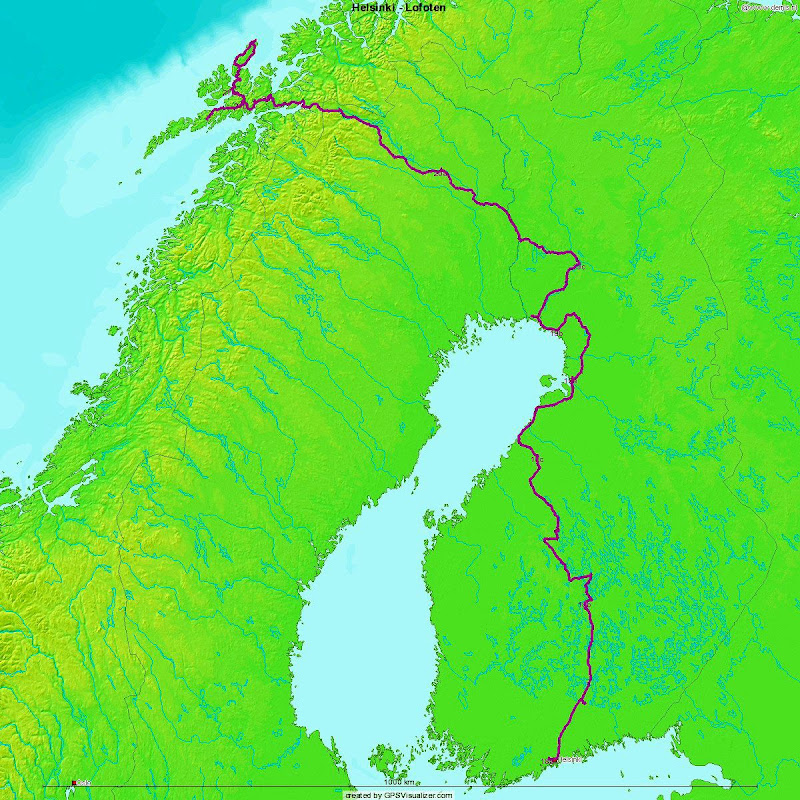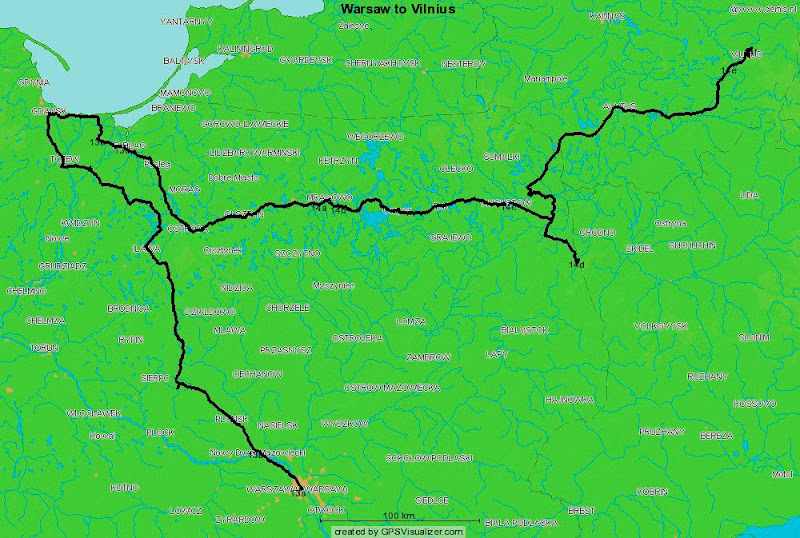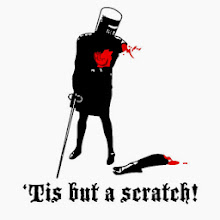This is the road that took me all the way to almost the most northern point of Western Europe, some 350km north of the Polar Circle. Undergoing it I was very thankful to myself for having decided to do this trip in summer (as if I had any other choice on a motorcycle...), that is if one can call maximum daytime temperatures of 16-18 degrees Centigrade “summer”...
The Finns are sweet with their rude road manners... Otherwise nice and helpful people, when behind the wheel of a car they turn inconsiderate, blindly-by-the-book egocentrical morons. People, lighten up! it’s not that you’re riding your houses on the roads so you must have everything happen your way or no other way. Be more gentile and forgiving, leave room for other’s mistakes (some of them might not be from around and a bit confused) and don’t think you’re all rally pilots only because you drive ¾ of the year on snow, ice or slouch!
Despite it’s flatness, Finland is a beautiful country to ride through because what it misses in height from the absence of mountains, it compensates in “depth” by the myriad of lakes, that are called like this by some sort of geographical convention I believe, because in reality they are more like inner seas, wide, wild and spectacular at any time of day and in any weather...
The lingering myth about Finland (and about all Scandinavian countries otherwise) I want to tear down in anger is the one referring to this land being the home of elks, reindeer and mosses. Locals cunningly try to keep alive this probably lucrative illusion by populating the side of their roads with warning signs about moose crossings and by filling the naïve tourist’s heads with stories about how in early summer months mother reindeers chase away their grown-up young in order to take better care of the newly born ones, leaving the formerly a confused and suicidal bunch throwing themselves in front of traffic. Don’t be fooled, I warn you. I have ridden Finland all the way from Helsinki to Lap Land choosing only secondary roads (out of about 900km I only had cca. 100km of motorway) and NEVER seen even a SINGLE reindeer, moose or elk, not even a stuffed one. It’s not that I missed having to avoid large herbivores bearing pointy horns, standing in the middle of the road while I was in full lean on a nice curve, but with the level of expectation build up by the hype about their massive presence, their complete absence generated some serious frustration.
After the very rewarding road up Finland I crossed in Sweden at Pello facing some another cca. 400km of northern Scandinavian landscape ‘till the border with Norway at Riksgransen. As it was midday, my plan was to ride to Abisko in northern Sweden for the night, but you know what they say about plans baked at home and their unfolding when put in practice... So the fist 100km in Sweden saw me riding under the heaviest rain I can remember in my long motorcycling years, the kind where visibility is about 30m and you almost get the impression you float more than you touch ground. But I was brave (or stupid) and I kept riding thinking that being so violent this rain can not last much. I was right as it didn’t but it got me wetter than I would have been if riding several hours under “normal” rain. The beautiful thing was that immediately after the almost solid curtain of water I have been under for about 15 minutes, the sun came out shining just in front of me low from under the dark grey heavy storm clouds and the whole landscape turned into fairy tale scenery. I was gliding/flying on a golden strip more than riding a road as the water covered asphalt glittered in the strong low sun for as far as I could see (because of the flare it wasn’t actually that far...). It was hallucinatingly beautiful but also perilous as it turned out as I managed only in the last fraction to avoid by a rather violent maneuver a piece of road that was in repair with it’s tarmac stripped off. How could have otherwise rigorous Swedes have left such a place without any kind of warning for the incoming drivers eludes me completely. I don’t know if riding straight into it would have necessarily resulted in a fall but for certain that place should have been signaled properly as being dangerous.
To my surprise I noticed that at least the part of Sweden I was going through was mainly unpopulated, and I mean to the extent where in about 270km I only went past two or three minuscule villages of few scattered houses. These long distances, even by modern transport standards, between members of the same region, I was to find out not much later, was the main reason people in northern Scandinavia are much open and friendlier that their southern compatriots making it the opposite to large scale Europe perception that has the people in the south considered more open, colloquial and friendly than the ones in the north. In these places it was because encounters with people other than the members of your own family were so rare as they were almost “by default” a pleasurable occasion. As a consequence, in this region, people are still less formal, visit their “neighbors” without to much protocol or previously set appointments and generally keep “open houses” for whoever happens to pass by.
Chilled by the otherwise welcomed wind-drying process and in dire need of a re-hydrating beer and a warming shot of whatever strong alcohol Swedes used to get cheerful on, I let myself seduced by the peacefulness of Vittangi a small village on the road some 100km from Kiruna, city I previously set as my destination for the day. And I did well by doing so. After creeping around what seemed like a deserted motel that even had a “For sale” sign in the door, I had the inspiration to ask the nearby grocer about it. I was told that it was open and functioning despite it’s desolate appearance and that I could find the owner on the second floor in the building across the street. As only chance can bring up such things, it turned out that the hotel owner, absent at the time of my arrival, was being replaced by her sister, an active musician recently returned to her home village after a two years contract with the Tokyo opera house as a soprano after some other long years spent abroad studying and performing. A lovely petite blond woman, with a voice one could hardly believe can come out of such delicate constitution. This was another shattered stereotype for me! good sopranos don’t necessarily need to be large, voluptuous, ample bosomed women!
After having a beer or two with this surprising woman and some of her neighbors among which the grocer I earlier asked about accommodation and a Russian lady also keeping some store in the vicinity, I headed for the motel 200m down from the main road. And the moment I found myself in the street I was blinded, literally blinded! It was 1am and the sun was still shining well above the horizon in an equivocal stance between setting and dawning. I was having my first midnight sun experience!!! And what an experience it was! Intense to level of being humbling. Suddenly all basic convictions about how “the world looks like" and how “sunshine follows darkness” are blown away in a manner that allows no going back. That night I slept happy and glowing with a deep sense of enrichment.
Next day I rode a lot under rain and cold weather for the remaining of Sweden and crossed as planned the Norwegian border at Ricksgransen in the midst of magnificent scenery. I ended the day earlier than planned, because of cold, exhaustion and being seriously wet, in a tiny wooden bungalow (easy to quickly warm up though...) in the camping set in the city of Sortland, deep in the heart of the magical Lofoten peninsula.





